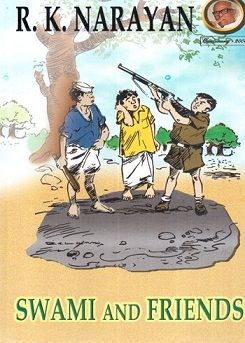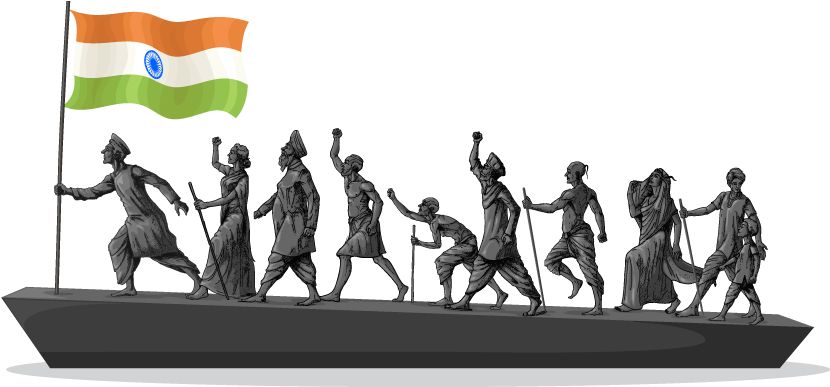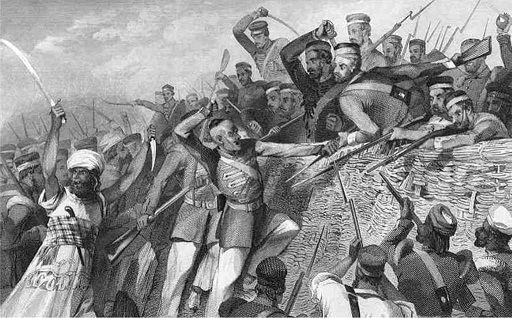Swami And Friends
Sep 05, 2019 • 731 views
“Swaminathan and Mani stood as if glued where they were and watched the train. The small red lamp of the last van could be seen for a long time, it diminished in size every minute, and disappeared around a bend. All the jarring, rattling, clanking, spurting and hissing of the moving train softened in the distance into something that was half a sob and half a sigh.”
Swaminathan is ten years old and life for him consists mainly of having adventures with his friends.
Introduction to the Book
Summary and characters
‘Swami and Friends’ by R.K Narayan (1906-2001) is the first of the three books written by him. The novel was originally published in 1935. Swami and Friends is the story of a 10-year-old boy, growing up during the colonial time, the pre-independence days .The novel is set in the British Colonial India, in a fictional town called ‘Malgudi’. The text reflects upon his journey from the innocent mischievous phase to the phase growing pains and maturity. He first studied at Albert Mission School before migrating to the Board High School. The school was built by British colonizers. His life is drastically changed when Rajam, son of the Police superintendent, joins the school and become friends with Swami. The book registers all the small confusions and dislocations of the child reaching the end of an idealistic childhood and facing the grave challenges of adulthood.
The novel begins with an introduction to Swaminathan and his four principal friends – Somu, Sankar, Mani and Samuel, the pea. The difference in the personalities of Swami and his friends only strengthen their bonds over time.
“Swami had two different attachments: one to Somu, Sankar and Samuel, a purely scholastic one, which automatically ceased when the school gates closed. His other attachment was more human, to Rajam and Mani.” (quoted from the book)
Swami lives with his father, mother and grandmother in the house until his baby brother is born. The balance in the house gets disrupted on the arrival of the baby, but soon Swami and others grow fond of the baby and accepts him in their normal routine.

Cover page of the Book – Source: Google
About the Author
Introduction and Surroundings
R.K Narayan or Rasipuram Krishnaswami Iyer Narayanaswami is a renowned English language novelist from India. In 1930, he completed his education and briefly worked as a teacher before deciding to devote himself to writing. He was cleverly able to transform the seemingly ordinary characters into larger than life individuals, with just the right amount of humor. The individuals brought a change in the existing social and political structures of Malgudi, a microcosmic representation of our nation
Accomplishments
Narayan, in a career of over sixty years, has written a total of 34 novels, some of them becoming the best-selling such as The English Teacher (1945), Waiting for the Mahatma (1955), The Guide (1958), etc. He also wrote a number of short stories; collections include Lawley Road (1956), A Horse and Two Goats, etc.
Awards
The Padma Vibhushan
The AC Benson Medal from the Royal Society of Literature
The Padma Bhushan

R.K Narayan; The Author- Source: Google
Indian Writing in English
Authors, Time Period and Importance
Indian English Literature is a true venture to depict the rare gems of Indian Writing in English. The literature has come a long way since its inception. It was a product of the colonial rule but since then, it has grown authentically and has attained an independent status in the world Literature. This literature highlights the Indian culture, tradition, social values and history. Authors bearing the flag of Indian English Writing include Tagore, Sri Aurobindo, R.K.Narayan, Raja Rao, Mulk Raj Anand-to name a few.
Backdrop of the Story
Political issues and Freedom Movements
The novel is set in the pre-independence colonial days of India. This was a period of several rising movements and awakening of the Indian people against the colonizers. People unified to revolt against the British people. The book is an excellent example of post-colonialist literature and set in a fictional town in India in the 1930s when the British Empire still ruled the country. The movements that were going around were the boycott movement, to boycott all the British products and use the products made in India by the native people. Gandhian philosophy and slogan of non-violence was gaining prominence. Use of Khadi, the cloth became a symbol of nationalism. All these aspects are highlighted through in the book.

Freedom Movements in India-Source: Jagran Josh
Themes Highlighted in the Book
While the book’s event revolves around common childhood trials and tribulations, there are major themes underlining the plot of the novel, including the political and personal under British colonial rule, education and oppression, the fluidity of identity and innocence, family and growing up.
Power Structure
Power structure is clearly visible in the book by how a 10-year-old describes each one of his friends. Marking the superiority, he was friends with Somu, the class monitor. Mani was physically strong, Sankar, the most brilliant one and Samuel, who is not outstanding. Swami compartmentalized his friends and viewed identity as fixed and straightforward. This can be a problematic trait as the implied meaning of power pyramid in government could be reflected here.
White Supremacy
The aspect of white supremacy and invasion is reflected in the text. Rajam was indicative of this. By his ways of solving problems, superiority owing to his English education and his linguistic etiquette, identifying weaknesses and strengths of others are all the same strategies used by the British colonizers.
Rebellion
The thought of rebellion, conflict and disobedience is deeply rooted in children. The incident of Swami complaining about his teacher Mr. Ebenezer to the principal clearly reflects on the religious friction and conflict.

The rebellion of Indian people against British colonizers – Source : History Discussion
Bullying and Violence
Bullying is normalized in the text and is taken very casually amongst Swami and his friends. Language of violence is commonly used by the children in the text. There are several incidents that show hostility of them towards each other and also unmasks the tone of violence and evil in the language of the friends.
Other Themes
The idea of patriarchy, authority and imitation is instilled in children. The utilitarian and shallow approach of men towards women is also depicted. The themes of isolation, confusion and acceptance surrounding the daily life of the children.
Citations from different essays
By Manoj Kumar Tembhre
According to his essay “Narayan’s character reveals a definite journey of self from innocence to experience. “The incident of Swami running away with problems and coming back with a clear mind can be seen as a justification to this statement.
By CN Srinath
According to his essay ‘R.K Narayan’s Comic Vision’, “his characters break the monotony and reflects upon his craftsmanship of their characteristics.”
Reviews By Other Critics
“remarkable maturity, and of the finest promise…and is the boldest gamble a novelist can take.” Graham Greene.
“Hilarious! ‘Swami and Friends’ is a keeper.” Passionate Book Review

The MCC cricket match in the text – Source : Madras Courier
Personal opinion and Reviews
“This one in a million piece could not find a publisher and that is the irony of the great master storyteller’s luck.”
The book seems to have such a picture painted of childhood that everybody craves for such an amazing childhood and those who had it reminisce their good old days. At first, I felt why give a children's book to a college student, why refer it in the syllabus, what it could possibly have than some children playing and going about their life in a usual way. I picked the book never to expect the world hidden in the pages. The book is relatable yet distinct. The simple yet moving writing transfers you to the realm of Malgudi and gives you an opportunity to remember your childhood days. It is a perfect light-hearted with deep meanings and history to fill you up with emotions and nostalgia. The book is critically acclaimed and recommended.

The TV program; Malgudi days – Source : Hans India
More Insight and Conclusion
The television program "Malgudi days" was an abridged version of the book and had a large viewing audience. Narayan’s work is free of judgement and has a seamlessly easy narrative. Although often hostile to each other, Swami and his friends share a unique, powerful and an imperfectly perfect bond showing realities of life. It perfectly captures nostalgia and is a must read for everyone.
Want to read more articles? Here, link to my next article- https://wrytin.com/maryarizwan/indian-writing-in-english-k0ck2cfh
